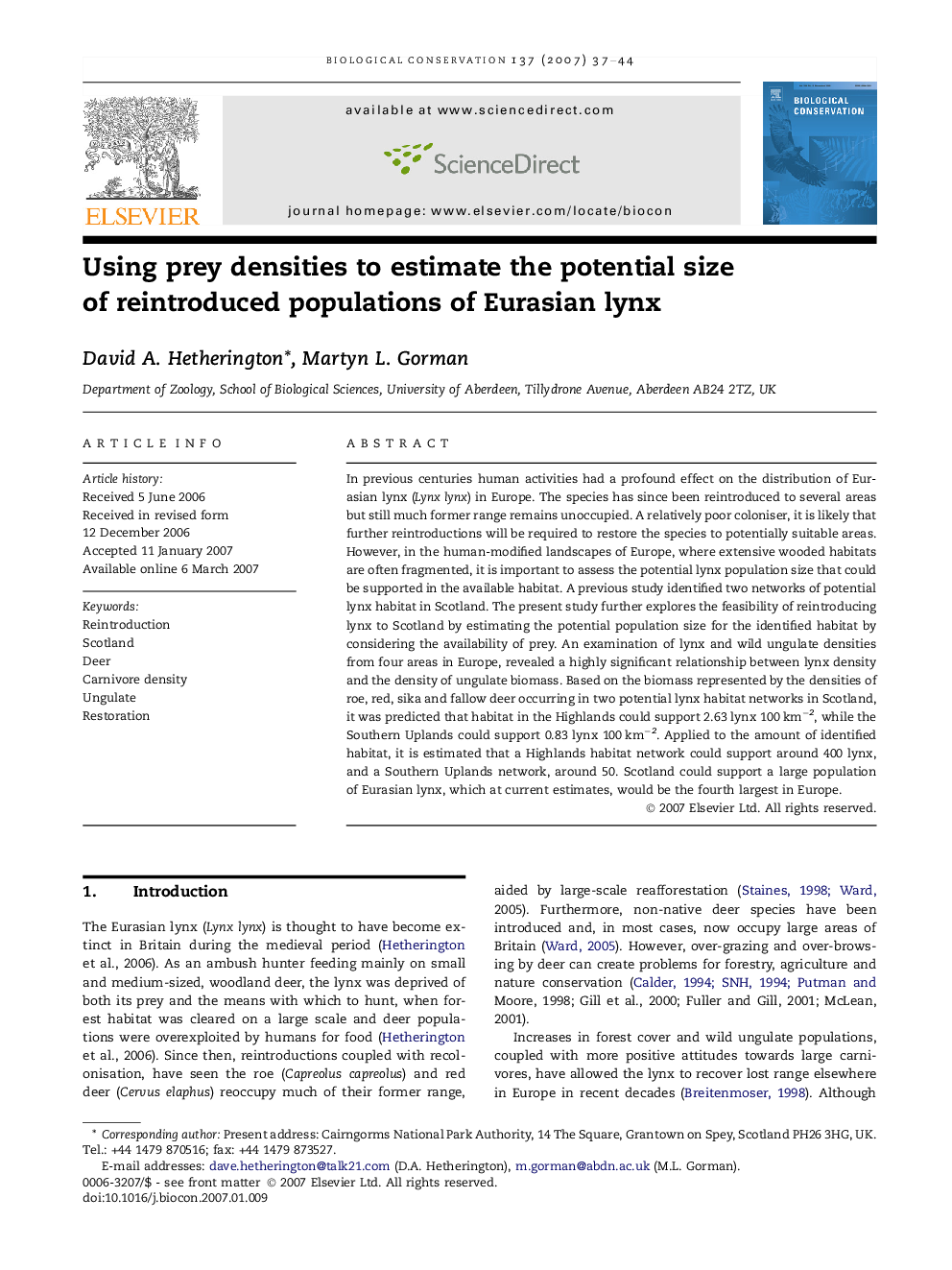| کد مقاله | کد نشریه | سال انتشار | مقاله انگلیسی | نسخه تمام متن |
|---|---|---|---|---|
| 4387492 | 1304609 | 2007 | 8 صفحه PDF | دانلود رایگان |

In previous centuries human activities had a profound effect on the distribution of Eurasian lynx (Lynx lynx) in Europe. The species has since been reintroduced to several areas but still much former range remains unoccupied. A relatively poor coloniser, it is likely that further reintroductions will be required to restore the species to potentially suitable areas. However, in the human-modified landscapes of Europe, where extensive wooded habitats are often fragmented, it is important to assess the potential lynx population size that could be supported in the available habitat. A previous study identified two networks of potential lynx habitat in Scotland. The present study further explores the feasibility of reintroducing lynx to Scotland by estimating the potential population size for the identified habitat by considering the availability of prey. An examination of lynx and wild ungulate densities from four areas in Europe, revealed a highly significant relationship between lynx density and the density of ungulate biomass. Based on the biomass represented by the densities of roe, red, sika and fallow deer occurring in two potential lynx habitat networks in Scotland, it was predicted that habitat in the Highlands could support 2.63 lynx 100 km−2, while the Southern Uplands could support 0.83 lynx 100 km−2. Applied to the amount of identified habitat, it is estimated that a Highlands habitat network could support around 400 lynx, and a Southern Uplands network, around 50. Scotland could support a large population of Eurasian lynx, which at current estimates, would be the fourth largest in Europe.
Journal: Biological Conservation - Volume 137, Issue 1, June 2007, Pages 37–44